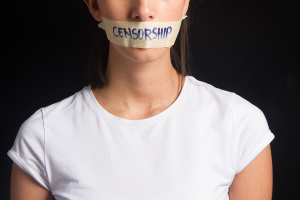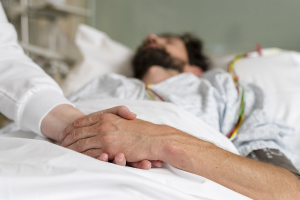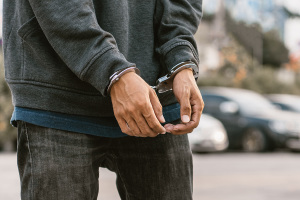Protecting the Innocent Through Technology
In a just society, acquitting the innocent is no less important than convicting the guilty. The principle that an accused person is to be presumed innocent until proven guilty is, therefore, fundamental to our American sense of justice. Americans generally believe that the innocent should be protected at all costs, and this includes making every possible effort to avoid punishing them for crimes of which they are not guilty.
This emphasis on protecting the innocent is based on a long Western tradition. It was foreshadowed by Exodus 23:7, "Have nothing to do with a false charge and do not put an innocent or honest person to death, for I will not acquit the guilty." (NIV) Even in the early days of Israel, God clearly emphasized the importance of protecting the innocent.
Sir John Fortescue, an English jurist, believed that every effort should be made to give the benefit of the doubt to the accused: "Who, then, in England, can be put to death unjustly for any crime? Since he is allowed so many pleas and privileges in favor of life. None but his neighbors, men of honest and good repute, against whom he can have no probable cause of exception, can find the person accused guilty. Indeed, one would much rather that twenty guilty persons should escape punishment of death than that one innocent person should be condemned and suffer capitally."
William Blackstone, famous for his four volume Commentaries on the Laws of England published between 1765-1769, explained that "the law holds that it is better that ten guilty persons escape than that one innocent suffer." He viewed the protection of the innocent as far more important than the condemnation of the guilty. This idea is the basis of the principle that the accused is innocent until proven guilty. It is not enough that people be suspicious of one man's conduct, or even that they believe he probably committed a wrongful act. No, a man must be proven beyond a reasonable doubt to have committed a crime in order to be convicted.
In 1895, the United States Supreme Court affirmed the importance of protecting the innocent in the case of Coffin v. U.S. The Court believed that the presumption of innocence was so important that it reversed a lower ruling and required a new trial for the defendant because the lower court judge hadn't made it clear to the jury that the accused was to be presumed innocent until proven guilty.
Developments in science are helping to advance the protection of the innocent in America's courts and to overturn convictions that were wrongfully obtained. Thanks to advances in DNA technology, those who have been mistakenly convicted in the past can sometimes be exonerated and set free through the presentation of DNA evidence. Since 1989, post-conviction exoneration has been achieved in 208 cases, 145 having occurred after 2000. This technological leap has greatly assisted our ability to pursue justice and protect the innocent.
Seventy-seven percent of the 208 wrongful convictions were the result of misidentification by witnesses. As a trial lawyer, I can attest that eyewitness observations are often fraught with error. The stress of exigent circumstances, the vantage point of one's view, difficulties with seeing or hearing, and the power of suggestion can adversely influence one's perception and memory of observed events. Sadly, these flawed observations sometimes lead to wrongful convictions. Thankfully, however, some of those who were wrongly condemned now have hope through post-conviction access to DNA evidence. Forty-two states currently give prisoners access to DNA evidence in some form, in order to further their ability to defend themselves against wrongful convictions.
This new technology doesn't just protect the innocent—it can also help to determine the guilty. Out of the 208 exonerations mentioned above, suspects or the true perpetrators have been identified in 77 cases.
DNA technology is helping to further the cause of justice by correcting occasional failings due to human perception, memory or manipulation. The men who have been exonerated had already spent, on average, 12 years in prison—a sobering statistic to anyone concerned with fashioning a just society.
All jurisdictions should embrace these scientific advances and incorporate them into their justice systems. While the possibility of a wrongful conviction can never be eliminated in its entirety, we must never cease in our quest to protect the innocent, even while convicting the guilty. A society cannot fairly call itself "just" unless it is vigilant to prevent and correct miscarriages of justice.
___________________________________________________
Ken Connor is Chairman of the Center for a Just Society in Washington, DC and a nationally recognized trial lawyer who represented Governor Jeb Bush in the Terri Schiavo case. Connor was formally President of the Family Research Council, Chairman of the Board of CareNet, and Vice Chairman of Americans United for Life. For more articles and resources from Mr. Connor and the Center for a Just Society, go to www.ajustsociety.org. Your feedback is welcome; please email [email protected]



























